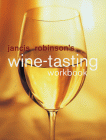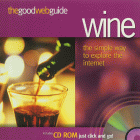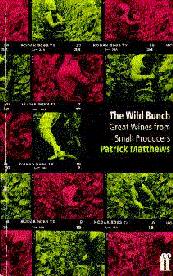
General wine books |
|
1001 wines you must try before you die is a brilliant book, but as one of the team of contributors, I'm probably a bit biased. The idea is quite simple: it's a compendium of many of the world's greatest and most interesting fine wines, with each having a picture (in most cases a label image) and a short (200 word) description. From the same publishing stable as The World of Fine Wine magazine, it's edited by Neil Beckett, and includes entries from a crack global team of wine-loving scribes. I don't know exactly how the list of wines was chosen – I'm guessing that Neal made use of his eminent editorial board for suggestions, but it is a remarkably eclectic, mouth-watering array covering all wine-producing countries, and not just the old world classics. The quality of the writing is really high, and it must have been quite a job pulling together all the text, getting hold of the images, and then designing the layout. The book is quite beautifully produced, in full colour, printed on nice paper, and while it's a bit heavy to lug around in your laptop bag, it's a great diversion – leave it lying around for causal browsing or bedtime reading. A real bargain at £20 (and a must buy at the amazon price of £12). Go to the amazon.co.uk catalogue entry for this book
I’d
been looking forward to reading this book: Natalie MacLean is a
Canadian writer who began her wine writing career in a similar way to
me, through a personal website. This is her first book, and it’s
really good. Written in her trademark accessible, gently humorous and
nicely self-deprecating style, the reader is immediately drawn into
the text. And on the back of this highly readable prose, a lot of good
information is smuggled in. This
isn’t a book for the hardened geek, although I found there was
enough meat here to keep my interest. Instead, it’s pitched at the
majority of people who have some interest in wine, but wouldn’t
count themselves as wine nuts. It’s not deliberately an educational
book, either, although I reckon most people would learn a good deal
from this. Natalie
deals skillfully with the transitions between the subjects she covers.
She begins in Burgundy, heads off to California and then sojourns in
Champagne. Then she addresses the role of the wine critic, looks at
the way wine is sold and deals with the issue of glassware. Then she
takes a look at wine and food matching, goes undercover as a
sommelier, and meets up with novelist Jay McInerney. The tone is
breezy, the pace just right, and the reader is left wanting more.
That’s a good sign. Go to the amazon.co.uk catalogue entry for this book
What
a depressing book. ‘A useful rule of thumb’, says Andrew Jefford,
‘is that any wine book with a photograph of its author on the front
cover is second-rate.’ In this case, Jefford’s rule is maintained.
This is an introduction to wine book—like we really needed
another—that shows a staggering lack of imagination on the part of
the publisher. Over
the last couple of years the two leading wine book publishers, Dorling
Kindersley in this case, and Mitchell Beazley (with Matt Skinner’s Juice),
shifting their focus from choosing authors by writing talent, and
instead opting for young sommeliers who they think look the part.
Their thinking is that they can create wine ‘slebs’, and in a
celebrity-driven culture they probably think the only way they can
sell wine books is through personalities. But
the results are very disappointing. In this case we have a very
ordinary and predictable introduction to wine text, which the
designers have desperately attempted to enliven by including lots and
lots of colour photographs, a large proportion of which have Master
Sommelier Vincent’s action-man like visage in them—in most cases
he’s either sipping wine
or appears to be giving an earnest explanation to an unseen customer.
The text is also pretty dumbed down, and follows exactly the same
predictable course that almost every other book of this type takes. Perhaps
the assumption is that people who are interested in wine but don’t
know much about it are therefore stupid. In my experience, most people
taking an interest in wine to the point where they actually want to
buy a book about it are actually quite sophisticated, intelligent
people. I reckon a far better strategy to get people interested in
wine is by giving them introductory texts that are well written,
interesting, and have some sort of personality to them. If
you are new to wine and looking for a book to guide you through the
basics, then this will do the job as will any myriad of similar
titles. But far better is Hugh Johnson’s Wine: a life uncorked,
which, while not being a dedicated intro to wine title, will actually
enthuse and inspire in a way that this book and its peers fail to do.
This is definitely what you'd term a quirky book. With no disrespect to author Peter May, who I know well from having drunk wine with at several dinners, it isn't something that's meant to be taken too seriously. Peter, author of a website devoted to unusual wine labels (www.winelabels.org), has produced a book with 100 of the world's most stylish, oddest, weirdest and funniest wine labels, with commentary on each facing page. It's the sort of book you'd leave by your toilet for browsing on the job. Great fun and an ideal stocking filler for the wine lover in your life. My favourite is probably Spatzendreck on page 195. Go to the amazon.co.uk catalogue entry for this book
Now,
40 years later, comes his autobiographical A
life uncorked, and for me, it’s his best book yet. But don’t
expect to learn too much about Hugh himself – a modest, private man,
there’s actually very little about him in the book at all. While
others might have filled the pages with stories about themselves –
and juicy gossip about their colleagues, of course – wine takes the
centre stage here. Indeed, rather than being arranged chronologically,
each chapter covers a different wine type, beginning with Champagne
and ending with Madeira. Those familiar with Hugh’s previous books
will immediately recognize the trademark elegant writing style that is
so easy to read. Hugh
is posh, but he’s certainly not elitist. Perhaps the reason for his
broad appeal as a wine writer is that he gets alongside the reader.
You feel he’s by your shoulder, like a benevolent schoolmaster,
gently guiding, rather than speaking down to you in lecture mode. And
while in four decades he must have amassed a huge amount of knowledge
about wine, he wears it lightly. ‘Wine is first and foremost a
social game; only secondarily and interest like music or
collecting,’ he writes in the preface. ‘It is about human
relations – hospitality, bonding, ritual…all the manoeuvres of
social life, and all under the influence, however mild and benign, of
alcohol.’ All the way through the text the theme of wine as a social
drug that finds its highest place at the table is a recurrent one.
Hugh is quite scathing of the collecting mentality that sees wine as
an object in itself, and lays in to influential American critic Robert
Parker for the way his 100-point scoring system is changing the way
wines are made, with an emphasis on big, heavy, obvious wines at the
expense of lighter, more elegant ones that often have more to say. A
nice feature of the book is that it is illustrated in large part by
Hugh’s old snaps, although he can’t have taken the majority of
them because he features heavily. It’s hard not to feel just a
trifle envious of the charmed life he must have led as one of the
premier wine communicators travelling the globe at other people’s
expense (aside: I have to be careful here because increasingly I’m
in the privileged position of doing as he has done. It’s called
research.) And because Hugh is not given to writing proper tasting
notes, concentrating instead on just the odd evocative sentence
(perhaps there’s something to be said for this approach), it’s not
like he’s had to scribble hard at all those dinners and lunches. Above
all, though, this book’s value is that it is a brilliant
introduction to the world of wine. If you are interested in wine and
want to learn more about it, forget the myriad ‘introduction to
wine’ titles that publishers have flooded the market with – they
are usually patronising, inaccurate and just plain boring to read.
Instead, you could do a lot worse than placing yourself in the trusty
hands of one of the world’s great experts, still at the top of his
game after some 40 years. Go to the amazon.co.uk catalogue entry for this book Mitchell
Beazley Discovering Wine Country Series Burgundy:
How to Find Great Wines Off the Beaten Track
by Patrick Matthews South
of France: How to Find Great Wines Off the Beaten Track
by Jonathan Healey These
three books are the first in a new series of wine travel titles by
leading wine book publisher Mitchell Beazley. They are well laid out,
nicely illustrated (in full colour) and well written. I guess the best
endorsement of them is that they make you want to actually visit the
regions themselves. Of the three, the South of France title suffers a
little because it is covering such a huge geographic spread, and as a
result seems a little dilute and unfocused. Burgundy and Bordeaux are
more successful in this regard: they aren’t terribly in depth (the
size of each book conspires against this) but they benefit from by
being written by journos whose primary specialization is in wine.
Verdict? Well produced books that are worth popping in your bag if you
are travelling to these regions. I look forward to the other titles in
this series.
Pinot
Noir is arguably the greatest of red wine grapes. I guess that’s a
bold statement to make, but it seems that no other variety has the
ability to beguile, thrill and frustrate the drinker to quite such an
extent. People often graduate to the charms of Pinot later than other
more immediately accessible red grapes, but when they do they
frequently
become hooked. Thus I can quite understand someone wanting to write a
book just on Pinot Noir. John Winthrop Haeger’s North American Pinot Noir is a big old book. Weighing in at 445 pages, it’s an encyclopaedic review of the enigmatic Pinot Noir grape and how it has found relatively recent success in California, Oregon and Washington State. Except for some tipped in colour maps, it’s unillustrated. I’ve spent some time browsing through this book and come away impressed: Haeger writes clearly, in a rather studied tone – in fact, the book has a semi-academic voice to it. Rather than writing with artistic flair, Hager generally avoids the first person and the book has more of a neutral, scientific tone. What
makes this book so interesting to me is the depth of coverage. The
publishers have allowed Haeger to go much deeper than most wine texts
delve. In the current market where almost all books are entry-level
and repeat themselves endlessly, this in-depth coverage of a rather
narrow subject is welcomed. We have discussions of clonal variation,
grapevine genetics, filtration systems, terroir and extraction, for
example. And the stance adopted by the author on many of these
controversial, rather technical issues is generally spot on. He’s
done his homework. A good deal of the bulk of the book is contributed
by the producer reviews, including dated tasting notes in many cases.
This is a book any lover of North American Pinot should rush out and
buy, and slowly digest, glass in hand. I like it, and it’s certainly
given me a hunger to explore US Pinot in more depth. Go to amazon.co.uk catalogue entry for this book
Beautifully illustrated with lots of glossy colour photos, this is a very pretty book, and I’ve had great fun browsing through it. I’ve also learned a lot. It’s written by an ex-assistant director of the INAO in France, who’s cited as an expert in soils science, vitculture and oenology, and it has been translated from French. So as you can imagine, the focus is firmly on the diverse wine terroirs of France, with less extensive coverage of other key global wine regions. Three points worth noting about this book. First, it’s a thinking person’s book: you’ve got to be prepared to study some fairly full-on geology to understand what Fanet is on about. Nothing wrong with that, but be prepared to spend some time digesting the first few background chapters – without this context, the rest of the text is not that accessible. Second, much like James Wilson’s popular book on terroir, this is a descriptive book: it tells us what the various terroirs are in terms of geology, but doesn’t make that all important link between the soil and the flavour of the wine. It’s a tall order to do this, but in the absence of this link, I find all the descriptions of the terroirs a little unsatisfying. Third, the translation is a bit annoying: for example, all the grape varieties have ‘The’ put in front of them. So it’s ‘The Syrah’ and ‘The Pinot Noir’. A minor point, I guess. It’s all quite cleverly put together, though, grouping the various terroirs according to their geological origin. Recommended for all wine lovers who have an interest in the soil. Go to the amazon.co.uk catalogue entry for this book
I must declare at the outset that this is a book I was
looking forward to for a while. With more than 500 pages this is a bit of a door-wedge
of a book. Despite its size, though, there isn’t much room for a
broader introduction to the subject – it is straight into the deep
end with a discussion of biodynamic practice and the various
preparations used. I guess my only gripe with this otherwise excellent
book is that it is aimed at believers. The assumption is that you are
already familiar with biodynamics and agree that it works; there’s
no discussion of the conflict between some of the tenets of this
agricultural system and mainstream science, or that some elements of
biodynamie might have efficacy while others don’t. The book is
poorer for the lack of a frank discussion of the controversies that
surround this subject. I think Monty would have done better if he’d
been able to take a step back from this subject, which is evidently
very dear to him, and think from the perspective of the non-believer. On the positive side, the bulk of the book consists of
a geographic survey of biodynamic producers, an extremely useful
feature, and it’s worth buying the book for this alone. There are
many streams or varieties of biodynamic wine growing, and this makes
it difficult to identify who is actually doing it. In addition, some
use it primarily as a marketing tool, while others will use just some
aspects of it without wanting to label themselves. Monty’s book is
the first systematic attempt to catalogue biodynamic winegrowing
throughout the world’s wine regions, and it should help to stimulate
interest in and debate around this unusual and fascinating
agricultural system. Go
to the amazon.co.uk catalogue entry for this book
Patrick McGovern’s book ‘Ancient wine’ is a unique and important contribution to the literature of wine. He’s a respected academic archaeologist, and in this work he takes us with him as he journeys to find the origins of modern wine. It’s part science, part detective work and part history, and while there’s lots of detail here, it’s written in terms a non-specialist can understand. One of the strengths of this book is that it is firmly evidence based. McGovern doesn’t just piece together a pretty story from a few bits of scattered evidence, he lets us know just how difficult ascertaining the true picture is in this line of work, and where he presents theories he gives a balanced account of how strong the evidence supporting them is. To me, the most interesting aspect of the book is the use he makes of the new science of ‘molecular archaeology’, a powerful analytic technique that takes small biological and chemical samples and extracts valuable molecular information from them. For example, tiny residues in the bottom of ancient clay pots can be shown to be from wine, or preserved grape seeds can be analysed to yield valuable clues. Using this analysis McGovern has provided answers to many key questions that were previously matters of speculation or inference. With
it's rather scholarly approach and intricate attention to detail, I
don’t think this book will be for everyone, but for anyone curious
about the origins of modern wine and at least a passing interest in
history and archaeology, I strongly recommend it. Go to the amazon.co.uk catalogue entry for this book
Simon Woods’ I don’t know much about wine…but I know
what I like may have an awkward title (if you are buying this as a
gift for a friend they might think you are saying something about
their lack of wine knowledge), but it works really well. The text is
broken up into 50 short chapters, all of which add something to the
book, and which are then grouped in 10 larger sections. Simon’s writing style is lively, interesting and balanced.
He’s jokey without being forced, and critical without being an
iconoclast. Best of all, he talks good sense – if I were to
recommend an introduction to wine book for someone new to the subject,
this would definitely be the one. I opened it up and found myself
reading through it chapter after chapter, agreeing all the way. Publishers Mitchell Beazley have done Simon proud: the design is excellent. The use of typography breaks the text up into digestible little chunks, and Roman Grey’s black and white illustrations are superb, giving the book a real sense of coherence. For just £4.99 this is a perfect stocking filler that almost anyone with a slight interest in wine would welcome. Go
to the amazon.co.uk catalogue entry for this book You
heard it through the grapevine: shattering the myths of the wine
business by Stuart
Walton My verdict? Walton writes well, is sometimes genuinely funny, and I was entertained from start to finish. But I don't think it's particularly good journalism. While many of Stuart Walton's criticisms of the UK wine trade are justified, a good number aren't. The tone of the book is unceasingly negative, and I feel that his points would have more weight put into the context of a more balanced (less jaundiced) overall perspective. Perhaps he needs a nice holiday? With this reservation, I'd recommend this book as a truly entertaining read that has some serious points to make. The only problem for the general reader (at whom this book is aimed) is sorting out the valid criticisms from the grumpy swipes. It's not an easy task. (See also: interview with Stuart Walton) Go to the amazon.co.uk catalogue entry for this book
The concept? Wine writer Simon Woods, accompanied by photographer Jason Lowe, set out to track the course of the vintage at two locations -- Louis Jadot in Burgundy and Domaine de La Baume in the Languedoc. The book that resulted is a mixture of narrative and photography, beautifully laid out and produced in a very elegant format. The photography is quite striking. Lowe has taken some risks and deviated from the standard wine book fare of vineyard shots and bunches of ripe grapes, preferring to catalogue a much more nuts and bolts montage of winemaking imagery. Most of the time this works brilliantly, although a couple of the compositions look a bit dodgy to my admittedly untrained eye. It's a story told very much in the third person: Woods is strictly an observer and doesn't involve himself at all. But he's consistent, and the text is pretty polished. When he strays onto areas of controversy -- and there are lots of these in winemaking -- a tactful line is taken, and where opinions are expressed they are well judged and balanced. Overall, I found this a great read, giving some real insight into
the process of growing grapes and making wine. Criticisms? Well, I
would have liked more substance -- possibly covering more (or
different) producers, and scratching a bit deeper below the surface.
The book is over remarkably quickly and ends a bit abruptly, leaving
me wanting more. But this aside, kudos to the author, photographer and
publishers for taking a bit of a risk, and in the process producing a
well conceived, good looking and interesting book.
What a shame about the title. The word 'workbook' conjures up images of education, schoolrooms, homework and swotting for exams. For most people, these aren't images of fun, and it would be a shame if people are put off what is an excellent book by simple word association. I usually find 'introduction to wine' books yawn-inducingly dull, but this is different. Jancis strikes the balance right between imparting essential information and keeping the book lively and fun, without falling into the trap of dumbing down or forced jokiness. There's all the usual material that these sort of books usually have, but with a fresh twist. Best of all, this book is intensely practical in its nature: the focus is on actually drinking the stuff (an indication of this is given by the title of the foreword: 'A book for the thirsty'). I can't help feeling that this is healthy and appropriate for a book about wine. One of the most effective features is that the text is divided into sections on both theory and practice, and it’s the latter components that set this book apart from the competition. While any old hack can write about wine theory, it is a whole lot more difficult to write successfully and sensibly about the practical side of wine tasting, and this is done here very well. A further useful feature is the glossary of wine tasting words, which are sensibly and accessibly described. Although this is clearly targeted at the novice wine geek -- for whom I'd say this was pretty much compulsory reading -- I think it has a lot to offer the more serious wine nut. I found it a really good read, and for me it helped provide a nice balancing perspective. Let's face it, there's an awful lot written about wine, but not a great deal about how it actually tastes, and this is surely what counts. Wine is a complex subject -- and to someone new to wine this complexity can seem bewildering. So if you are starting out on the road to wine geekdom, I can think of no better book to guide you on your way. Buy this book from amazon.co.uk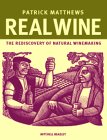 Real wine: the rediscovery of natural winemaking by Patrick Matthews. Hardcover - 288 pages (14 October, 2000) Mitchell Beazley;
ISBN: 1840002573. Real wine: the rediscovery of natural winemaking by Patrick Matthews. Hardcover - 288 pages (14 October, 2000) Mitchell Beazley;
ISBN: 1840002573.
Patrick Matthews ploughs a different furrow to other wine writers. He's a thinker -- and a bit philosophically inclined. While most wine books aim to simplify the complicated subject of wine for the general reader, Matthews isn't happy to take this well trodden path. Instead, he takes a complex subject and makes it even more complicated. He established his reputation as someone prepared to grapple with the thorny issues surrounding wine in his previous book, The wild bunch: great wines from small producers, and Real wine follows in a similar vein. However, while The wild bunch was an impressive book, Real wine is even better. It's a brilliantly conceived book that makes gripping reading for anyone intrigued by the deeper issues of wine and its production. In essence, this book addresses the question of how to go about making a 'real wine'. This provides a thread of continuity that ties together each of the chapters. These embrace some of the most contentious yet vital issues surrounding wine today, including site selection, planting the vines, organic and biodynamic viticulture, choice of grape variety, wine making techniques, what constitutes a wine fault, and making money. Finally, there's a fun but rather quirky appendix aimed at helping interested readers to actually make 'real wines' themselves. At the heart of this book is the tension between the old and new world approaches to making wine. On the one hand there are the traditional vignerons; on the other the new world technology-driven winemakers. But Matthews skilfully avoids the usual generalizations and clichés surrounding the old world/new world debate by focusing mainly on California, where winemakers reflect both traditions, and there is currently a swing back to 'natural winemaking'. It's a good read, and pretty well researched. Matthews gives the impression of going in open-minded, and even where he has chosen to take a stance, he avoids being preachy. A lot of credit has to go to publishers Mitchell Beazley, first of all for being brave
enough to publish something so far off the beaten track, and secondly for the attractive
and innovative design: the book has been produced in a squat, almost square format, rather
reminiscent of a religious publication (perhaps a prayerbook?), which is appropriate for
such a philosophical book. All in all, it's a compulsory purchase for any thinking wine
lover or wine professional. Attractively produced and beautifully illustrated, this handy-sized guide is a useful introduction to the varied wines of France. Joseph writes well and the book follows the now well worn path of a few general introductory chapters (history, how wine is made, soils and climate, wine tasting, glossary, food and wine) followed by a survey of wine regions, one by one. If this sounds a bit dry and predictable, the snappy text and lavish illustrations bring the subject to life, and innovative touches, such as suggested driving tours through each region, keep things fresh. From time to time Joseph isn't shy about expressing opinions, and where he's done this, I think his judgement is pretty sound. Of course, any book this size that attempts to deal with every French wine region will inevitably be a little superficial in its coverage, but I'd gladly recommend this book to anyone looking for a readable entry-level guide to French wine, or even to more experienced wine geeks wanting to enliven their perspective on arguably the most fascinating of the wine-producing nations. Buy this book from amazon.co.uk
Drilling for wine by Robin Yapp.
Faber & Faber, 1988 (ISBN 0 571 14760 7) Adventures on the wine route: a wine buyer's tour of France
by Kermit Lynch. Bodley Head, 1989 (US version: Farrar, Straus
& Giroux 1988) (ISBN 0 370 313623)
|
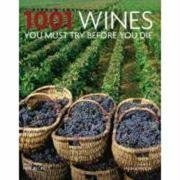
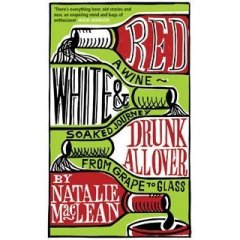 Red,
white
Red,
white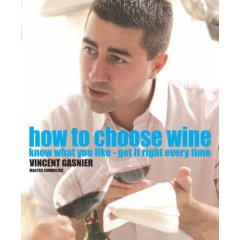
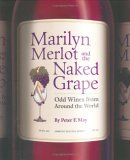
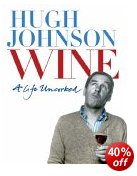
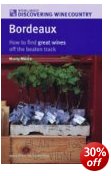
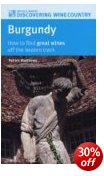
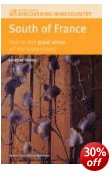

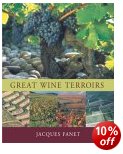 Great
Wine Terroirs
Great
Wine Terroirs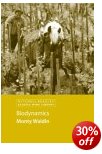



 Vine
to bottle: how wine is made by
Simon Woods (Photography by Jason Lowe)
(Hardcover - 160 pages; May 2001; Mitchell Beazley; ISBN: 1840003391)
Vine
to bottle: how wine is made by
Simon Woods (Photography by Jason Lowe)
(Hardcover - 160 pages; May 2001; Mitchell Beazley; ISBN: 1840003391)
